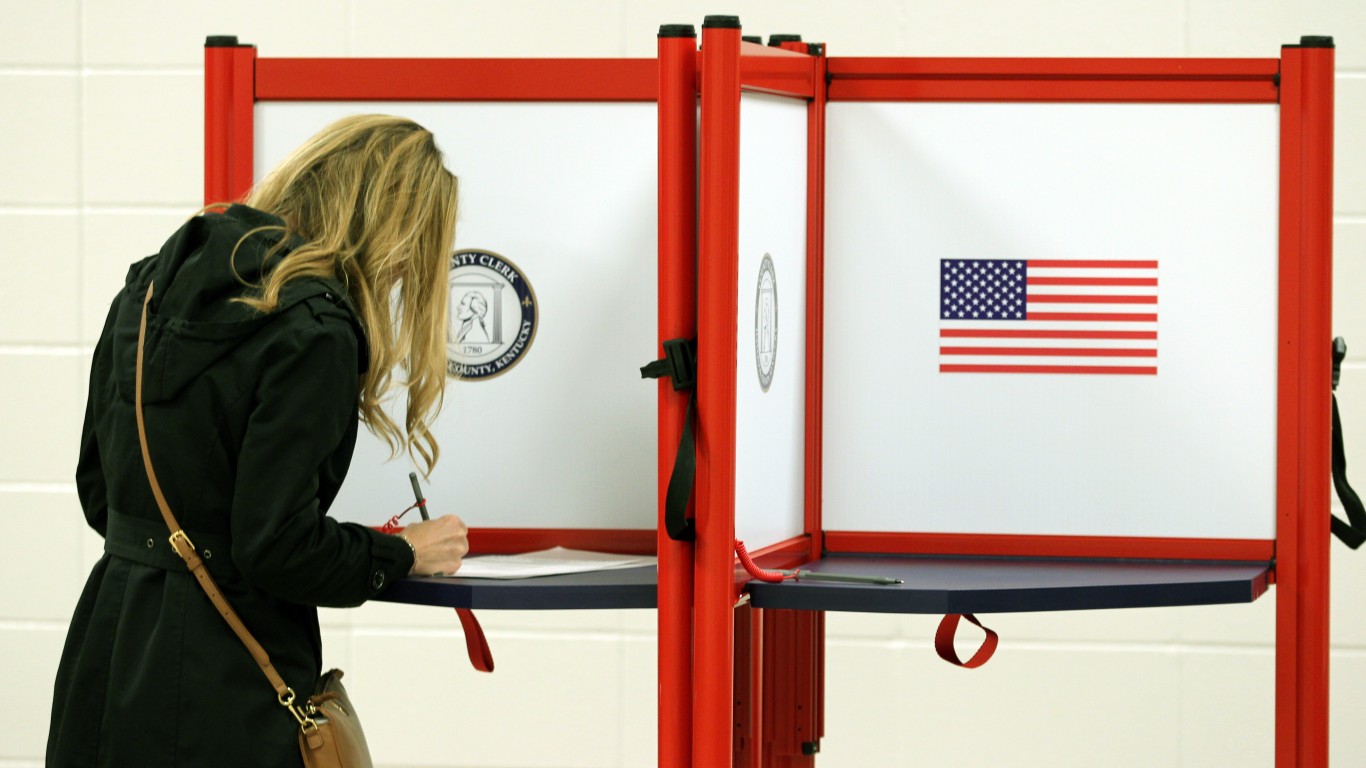
Clean energy is a growth industry, and increasingly so, but the COVID-19 pandemic year of 2020 saw the clean energy workforce shrink by 3.73% from the previous year, according to preliminary data from the 2021 U.S. Energy Employment Report, as analyzed by E2, a nonpartisan group that advocates for environmental and economic policies. The gain of 188,775 clean energy jobs between 2017 and 2019 was wiped out — and then some — as 306,816 were lost in 2020.
The largest sector by employment, energy efficiency — the sector employs about two-thirds of the clean energy workforce — suffered significant job losses in 2020, losing nearly 272,000 jobs, despite a recovery in the second half of the year. This was mainly attributed to restricted access to buildings for purposes of installations during the pandemic.
The renewable energy and clean fuel sectors also saw significant job growth in the second half of 2020, though job growth was still negative by the end of the year when compared to 2017.
Not all sectors suffered equally, and some actually did very well, continuing or expanding growth even through the pandemic — these sectors are providing the fastest growing energy jobs. Though clean vehicle jobs fell by 18.6% in the first months of 2020, they grew 26.2% in the second half, recording a 17.7% growth from 2017 through 2020. The grid and storage sector also managed to erase pandemic declines and post job growth from 2017.
Job changes by subsector were even more nuanced, though they generally reflected the sector overall. To find the fastest growing clean energy jobs, 24/7 Wall St. reviewed E2’s Clean Jobs America 2021 report. The 21 subsectors are ranked by job growth in the three years from 2017 through 2020. (And these are the states adding the most clean energy jobs.)
Despite the time, momentum, and employment opportunities lost due to COVID-19, the future of clean energy and clean energy jobs is extremely bright, and, for most sectors, the growth in recent years other than 2020 is an indicator of what is to come. (Find if any of the clean energy jobs are among the highest paying jobs you can get without a college degree.)
The level of growth will necessarily depend on the policies the federal government is able to enact in the coming years. Strong clean energy policies that include funding and other incentives will serve to create jobs in every state, offer savings to consumers based on energy efficiency, improve and protect the electric grid, reduce pollution, and play a needed role in the reduction of greenhouse gases that are driving climate change.
Click here to see fastest-growing (and shrinking) clean energy jobs
Click here to see our detailed methodology

21. Hydrogen and fuel-cell vehicles
> Clean energy jobs growth 2017-2020: -18.63%
> Clean energy jobs growth 2017-2019: -12.83% — the lowest
> Employment 2017: 12,338 — 4th lowest
> Employment 2019: 10,755 — 2nd lowest
> Employment 2020: 10,040 — 2nd lowest
Even before the pandemic, there were relatively few jobs supporting the development of fuel cell cars and the hydrogen needed to power them. Still, fuel cell technology holds promise for transforming the energy picture in the future. Because of its efficiency and flexibility it could be used in a wide variety of applications beyond clean cars, from portable electronics to distributed electricity generation. Experts believe that predicted growth in this industry will mean “a vast number” of new jobs.
[in-text-ad]
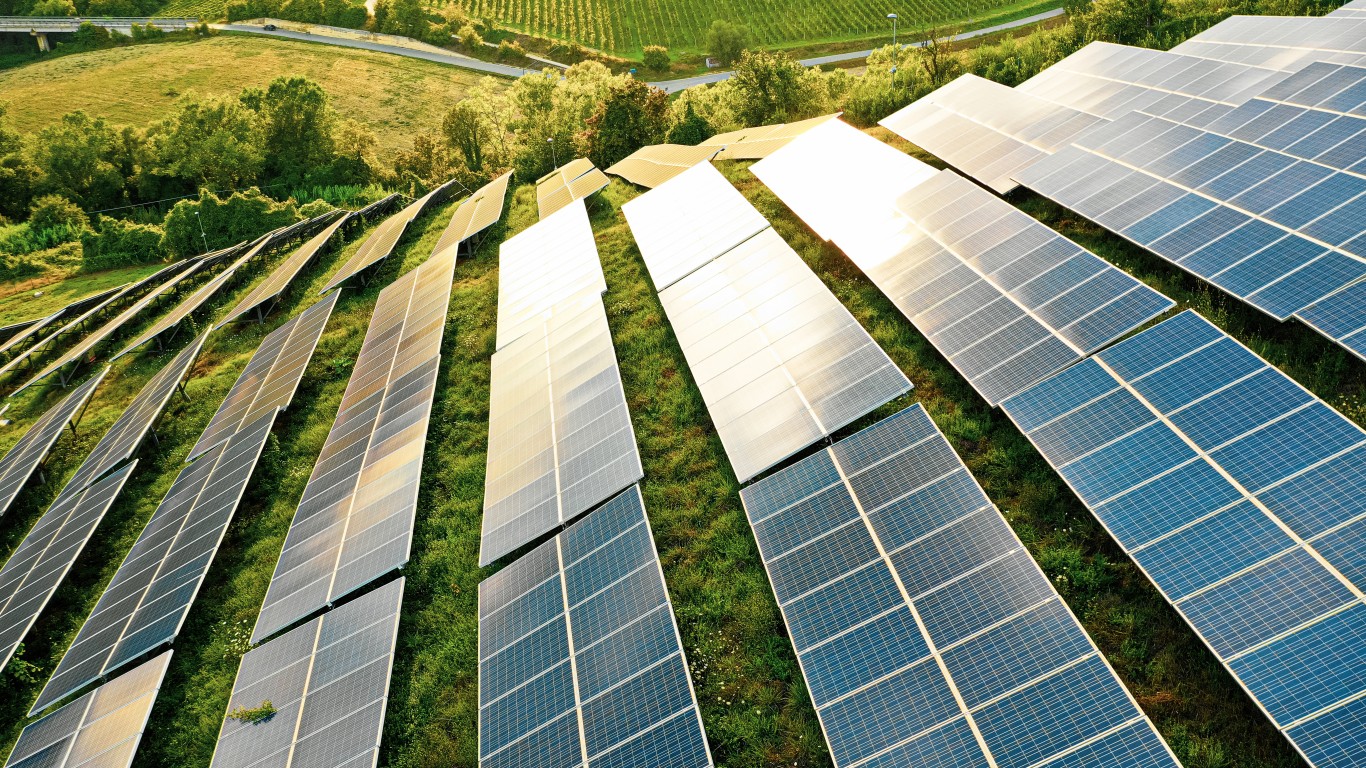
20. Solar energy
> Clean energy jobs growth 2017-2020: -9.60%
> Clean energy jobs growth 2017-2019: -1.40% — 2nd lowest
> Employment 2017: 350,291 — 5th highest
> Employment 2019: 345,393 — 5th highest
> Employment 2020: 316,675 — 5th highest
Even with the slowdown of the last few years, solar has been a booming industry over the last 10 years, with solar energy production 23 times greater than it was in 2011, according to Environment America, as solar energy is growing more efficient and cost effective with strides in technology. Between 2010 and 2019, solar jobs increased by 167%, according to The Solar Foundation’s “National Solar Jobs Census.”
The Solar Industries Association has predicted that solar installations will quadruple by 2030, as governments push to remove carbon from our energy future.

19. Other (EE)
> Clean energy jobs growth 2017-2020: -9.57%
> Clean energy jobs growth 2017-2019: 1.92% — 4th lowest
> Employment 2017: 289,622 — 6th highest
> Employment 2019: 295,185 — 6th highest
> Employment 2020: 261,894 — 6th highest
Of the 2.1 million energy efficiency jobs in the U.S., the largest numbers are in Energy Star, lighting, HVAC, and advanced materials, making up 88% of the subsector. Much of the remainder are in jobs, mostly local, that support the construction of energy efficient buildings and provide energy efficiency services, such as weatherization. Like the energy efficiency sector generally, these jobs have expanded reliably over the years, and will continue to do so.
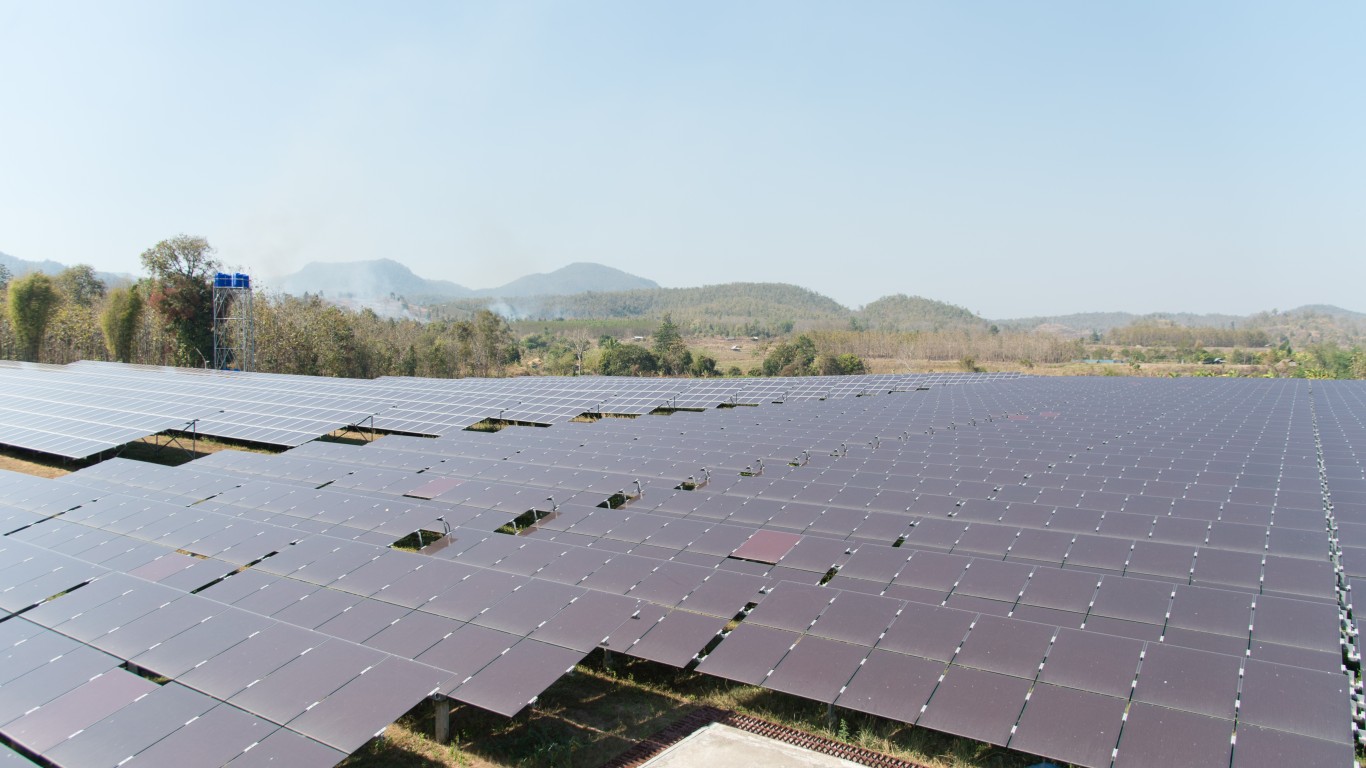
18. Micro grid
> Clean energy jobs growth 2017-2020: -8.48%
> Clean energy jobs growth 2017-2019: 9.45% — 7th highest
> Employment 2017: 20,275 — 8th lowest
> Employment 2019: 22,192 — 8th lowest
> Employment 2020: 18,556 — 7th lowest
Micro grids distribute locally-produced energy, using primarily solar and battery power. Their operation provides for flexibility, by, for example, allowing for either connection to or independence from other grids. While micro grids provide only 2% of the country’s distributed energy, they will increase in importance, creating good-paying local jobs, as the nation seeks to reduce the vulnerabilities and inefficiency of the existing grid system, particularly in the face of worsening natural disasters.
[in-text-ad-2]

17. Advanced materials (EE)
> Clean energy jobs growth 2017-2020: -7.65%
> Clean energy jobs growth 2017-2019: 4.47% — 8th lowest
> Employment 2017: 350,918 — 4th highest
> Employment 2019: 366,608 — 4th highest
> Employment 2020: 324,060 — 4th highest
The development of advanced materials is critical to a clean and efficient energy future, requiring a skilled workforce trained in science and technology as well as workers involved in testing and manufacturing. Just as technology has reduced the cost and efficiency of solar power over time, new materials will improve the functionality and efficiency of a range of energy-related equipment, from electrodes and semiconductors to batteries and generators.
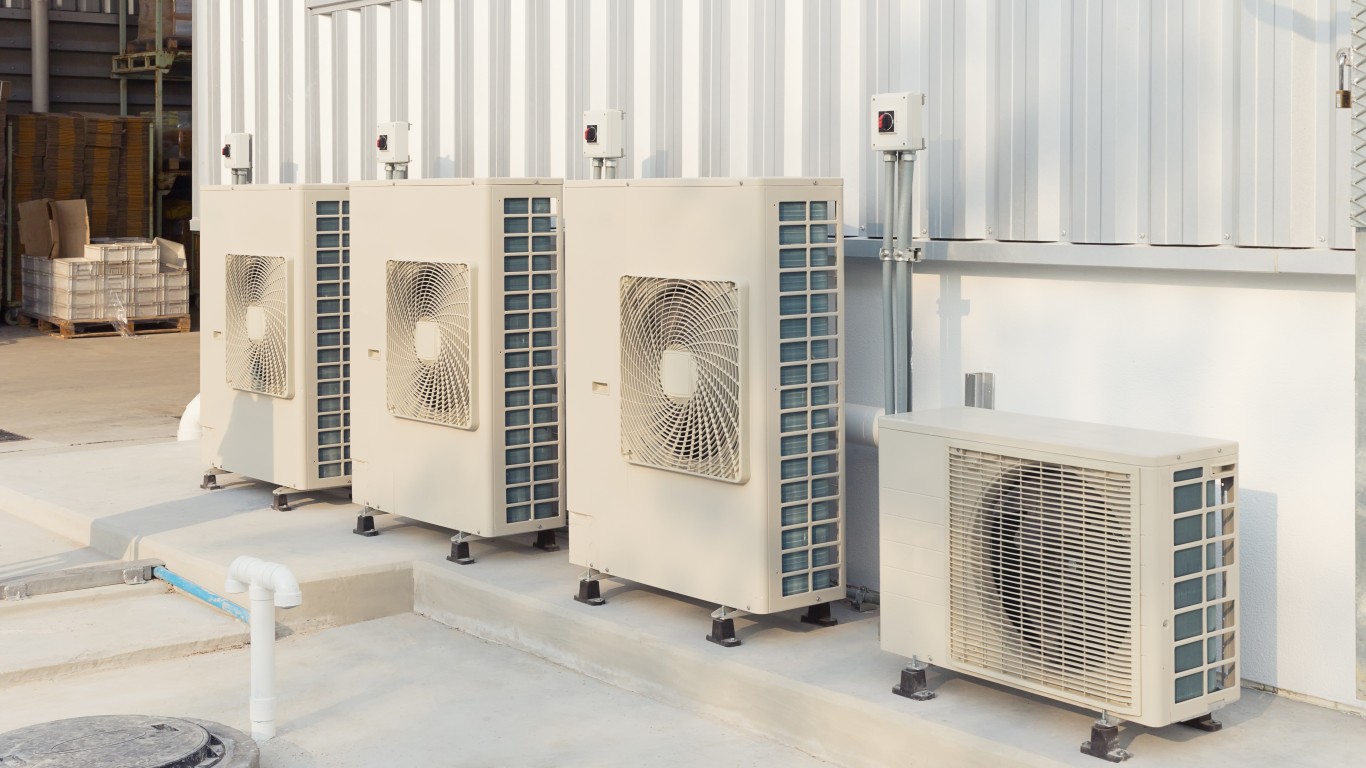
16. High efficiency HVAC & renewable H&C
> Clean energy jobs growth 2017-2020: -7.18%
> Clean energy jobs growth 2017-2019: 5.36% — 9th lowest
> Employment 2017: 537,475 — 2nd highest
> Employment 2019: 566,290 — 2nd highest
> Employment 2020: 498,863 — 2nd highest
Between 2017 and 2020, jobs in high efficiency HVAC and renewable heating and cooling had already risen close to the job numbers for traditional HVAC, ranging from a difference of 21,000 jobs in 2017 to 33,000 in 2020. As renewable energy sources become more available, so will employment involving heating and cooling systems that use less energy and refrigerants, are less polluting, and keep indoor air cleaner.
[in-text-ad]
15. Smart grid
> Clean energy jobs growth 2017-2020: -6.09%
> Clean energy jobs growth 2017-2019: 4.25% — 6th lowest
> Employment 2017: 24,586 — 9th lowest
> Employment 2019: 25,631 — 9th lowest
> Employment 2020: 23,089 — 9th lowest
Our electricity transmission and delivery system — known as “the grid” — was developed in the 1890s for the needs of a very different era from our own. The grid is now plagued by aging infrastructure, outdated technology, inefficient delivery, and vulnerability to weather events such as heat and cold waves and storms.
The smart grid is being developed to address those weaknesses, introducing two-way communication in the flow of electricity, coupled with sophisticated computerization and sensing technology. Building and maintaining the smart grid will create a demand for specialized training and workers.

14. Other biofuels
> Clean energy jobs growth 2017-2020: -5.96%
> Clean energy jobs growth 2017-2019: 1.68% — 3rd lowest
> Employment 2017: 18,695 — 6th lowest
> Employment 2019: 19,009 — 5th lowest
> Employment 2020: 17,581 — 5th lowest
Ethanol is the most well known and commonly used biofuel produced from biomass, essentially plant material, as distinguished from fossil fuels that are extracted from geological formations. But there are other biofuels that share the same positive characteristic: they are clean burning, are derived from renewable resources, and can be produced anywhere that the requisite plant material can be grown.
Like ethanol, these fuels — biogas, biodiesel, methanol, and butanol — will play a role as transitional fuels as we continue to generate greater percentages of power from renewable sources that do not require combustion.

13. Traditional HVAC
> Clean energy jobs growth 2017-2020: -4.82%
> Clean energy jobs growth 2017-2019: 7.13% — 10th highest
> Employment 2017: 558,576 — the highest
> Employment 2019: 598,375 — the highest
> Employment 2020: 531,640 — the highest
Heating and cooling systems represent a substantial investment for residential and commercial buildings alike. Even when incentives are available, replacement is costly. The movement to high efficiency and renewable energy systems will take time as older systems fail and pricing for newer systems becomes more affordable. Still, traditional, affordable HVAC has become significantly more efficient over the years, capable of reducing both cost and energy demands when older systems are replaced.
[in-text-ad-2]

12. Energy Star & efficient lighting
> Clean energy jobs growth 2017-2020: -4.14%
> Clean energy jobs growth 2017-2019: 7.91% — 9th highest
> Employment 2017: 511,933 — 3rd highest
> Employment 2019: 552,435 — 3rd highest
> Employment 2020: 490,717 — 3rd highest
Energy Star is a U.S. Department of Energy certification program that rates appliances and lighting for energy efficiency. Certification is used to incentivize the use of efficient products in industry and new construction, while, for residential consumers, products are promoted with promises of cost savings.
Because it does not represent a single breakthrough technology, the Energy Star impact on energy efficiency and pollution reduction is incremental, but it will reliably continue to create jobs and make a difference in the larger quest for cleaner energy. Since 1992, it is already responsible for reducing greenhouse emissions by 4 billion metric tons, according to Energy Star.

11. Other ethanol/non-woody biomass
> Clean energy jobs growth 2017-2020: -3.13%
> Clean energy jobs growth 2017-2019: 3.04% — 5th lowest
> Employment 2017: 20,083 — 7th lowest
> Employment 2019: 20,694 — 7th lowest
> Employment 2020: 19,455 — 8th lowest
Ethanol from biomass is a high octane fuel used to supplement gasoline. While corn is used in 98% of the ethanol production in the U.S., corn ethanol was not included in E2’s clean jobs numbers because of other environmental issues associated with the use of corn. The remaining ethanol comes from sorghum, switchback grass, and miscanthus.
The decline in ethanol industry jobs during the pandemic is directly related to lockdowns and the reductions in vehicle miles traveled. Two opposing trends will impact the future of ethanol as a fuel and a source of jobs. On the one hand, government regulations and vehicle flexibility are allowing for increased percentages of ethanol in gas (the norm is currently 10%), on the other, the world is slowly turning away from gasoline-powered cars.
[in-text-ad]

10. Low-impact hydro
> Clean energy jobs growth 2017-2020: -2.43%
> Clean energy jobs growth 2017-2019: 6.70% — 10th lowest
> Employment 2017: 11,531 — 2nd lowest
> Employment 2019: 12,304 — 3rd lowest
> Employment 2020: 11,251 — 3rd lowest
Future development of low-impact hydropower faces multiple challenges, such as finding and preparing candidate waterways, modifying plans to meet local objections, and justifying the high cost of design, construction, testing, and environmental mitigation. For hydropower to be environmentally acceptable and cost-effective, the industry will require a skilled workforce to deliver innovation, technological advances, and new materials.
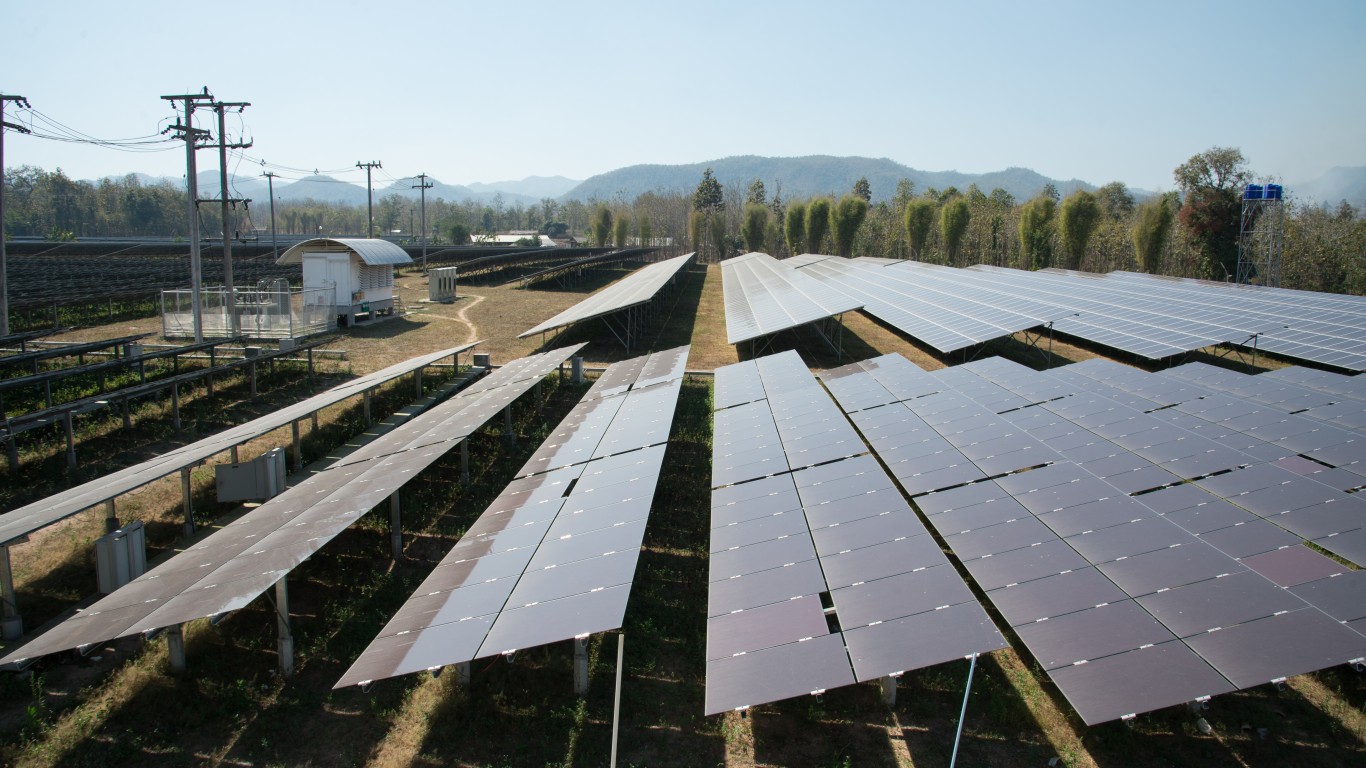
9. Other grid modernization
> Clean energy jobs growth 2017-2020: -1.60%
> Clean energy jobs growth 2017-2019: 8.87% — 8th highest
> Employment 2017: 18,482 — 5th lowest
> Employment 2019: 20,122 — 6th lowest
> Employment 2020: 18,187 — 6th lowest
Smart grid and microgrid innovation will eventually replace the aging grid that carries power to our homes, institutions, and businesses. In the interim, repairs and improvements will begin to modernize electricity distribution and the more than 19,000 generators, 55,000 transmission substations, and 7 million miles of lines on which we currently rely.

8. Natural gas vehicles
> Clean energy jobs growth 2017-2020: 0.32%
> Clean energy jobs growth 2017-2019: 4.38% — 7th lowest
> Employment 2017: 12,338 — 4th lowest
> Employment 2019: 12,878 — 4th lowest
> Employment 2020: 12,377 — 4th lowest
Natural gas vehicles run on methane, the cleanest burning fossil fuel, or on biogas — methane’s renewable look-alike, derived from biomass. There are millions of natural gas vehicles on the road, from passenger vehicles to trucks and buses, but they are mainly in China, Iran, India, Pakistan, and Argentina. In the United States, they have not caught the public imagination and exist mainly in bus fleets. Recent growth is partially as a result of corporations, such as Waste Management and UPS, replacing diesel trucks with natural gas truck fleets.
Though they have made limited inroads in replacing some of their dirtier and costlier gasoline-powered counterparts, natural gas vehicles can be viewed as transitional, helping to move us closer to a carbon free, all electric future.
[in-text-ad-2]

7. Geothermal
> Clean energy jobs growth 2017-2020: 0.92%
> Clean energy jobs growth 2017-2019: 10.91% — 5th highest
> Employment 2017: 7,929 — the lowest
> Employment 2019: 8,794 — the lowest
> Employment 2020: 8,002 — the lowest
Even with impressive pre-pandemic job growth, geothermal is not at all impressive in the number of people it employs. Still, as the quest for green, non-fossil fuel energy builds, geothermal will require a growing — though still relatively small — workforce of scientists, engineers, drillers, and roustabouts.
6. Bioenergy/CHP
> Clean energy jobs growth 2017-2020: 6.14%
> Clean energy jobs growth 2017-2019: 9.84% — 6th highest
> Employment 2017: 37,825 — 10th lowest
> Employment 2019: 41,546 — 10th lowest
> Employment 2020: 40,146 — 10th lowest
Bioenergy, while employing relatively small numbers of workers, is a growth industry, offering a flexible, local, clean source of electricity, using biomass of varying feedstocks and offering the added efficiency of using the heat created in the process. Currently, biomass CHP (combined heat and power) is mainly used in paper, wood products, chemical, and food processing, but the EPA is encouraging its expanded use through partnerships with industry leaders.
[in-text-ad]

5. Wind energy
> Clean energy jobs growth 2017-2020: 8.72%
> Clean energy jobs growth 2017-2019: 6.82% — 11th highest
> Employment 2017: 107,444 — 7th highest
> Employment 2019: 114,774 — 7th highest
> Employment 2020: 116,817 — 8th highest
Power from wind is clean, affordable — and getting more so — and usable in all 50 states. Unlike several other subsectors, wind energy showed continued growth through 2020, an indication that its growth is unstoppable. The EPA predicts that it will provide 600,000 jobs by 2050. It will also avoid the emission of 250,000 metric tons of air pollutants and 12.3 gigatonnes of greenhouse gases.

4. Clean storage
> Clean energy jobs growth 2017-2020: 16.70%
> Clean energy jobs growth 2017-2019: 19.18% — 2nd highest
> Employment 2017: 66,874 — 10th highest
> Employment 2019: 79,699 — 9th highest
> Employment 2020: 78,040 — 10th highest
Energy storage is an essential element in the future clean power grid, filling the gaps in the intermittent power created by solar and wind. As such, it has experienced an intensive research and development push in recent decades and significant advances in recent years. It will continue to surge as we move toward a fossil fuel free energy future, spurred by demand and falling prices for lithium-ion batteries. While not a huge job generator, it will be a reliably growing one.

3. Plug-in hybrids
> Clean energy jobs growth 2017-2020: 18.69%
> Clean energy jobs growth 2017-2019: 28.06% — the highest
> Employment 2017: 40,308 — 11th highest
> Employment 2019: 51,619 — 11th highest
> Employment 2020: 47,842 — 11th highest
Plug-in hybrids have both electric motors and gas combustion engines, with the ability to recharge the battery. Though not as clean as all-electric cars, they provide consumers the reliable range guaranteed by readily available gasoline. Concerns about getting stranded will subside as battery technology continues to improve and charging stations are installed across the country. For now, plug-ins are transitional vehicles.
Though the industry is still growing, it is already losing market share to all-electric cars. In 2012, the ratio between all-electrics and plug-in hybrids was 56:44; in 2020, it was 69:31, according to reports by McKinsey and EV Volume. The workforce will likely shift with the trend.
[in-text-ad-2]

2. Hybrid electric vehicles
> Clean energy jobs growth 2017-2020: 19.79%
> Clean energy jobs growth 2017-2019: 13.60% — 3rd highest
> Employment 2017: 99,871 — 8th highest
> Employment 2019: 113,449 — 8th highest
> Employment 2020: 119,638 — 7th highest
Even as plug-in hybrids are slowly being replaced by all-electric vehicles, sales of hybrid cars continued apace through the 2020 pandemic year and are currently booming. While U.S. car sales generally grew by 29% in the first half of 2021, hybrid sales surged by 142%, according to the Washington Post.
While their popularity exceeds that of electric vehicles, with hybrids comprising 4.9% of the cars on the road compared to 2.3% for all-electrics, they will eventually be phased out along with other gas-powered vehicles. Still, their acceptance by a public that has a growing interest in eco-friendly cars, but still fears the limitations posed by electric vehicles, means that job growth in the hybrid car industry will continue — at least in the short term

1. Electric vehicles
> Clean energy jobs growth 2017-2020: 20.91%
> Clean energy jobs growth 2017-2019: 12.15% — 4th highest
> Employment 2017: 69,250 — 9th highest
> Employment 2019: 77,667 — 10th highest
> Employment 2020: 83,733 — 9th highest
Electric vehicles are the future, and the future has begun, as the job growth figures for 2017 through 2020 demonstrate. As the automobile industry moves away from gas-powered vehicles and increases the number of model choices for all-electric cars, it can be anticipated that the workforce that supports the design, manufacture, maintenance, and sales of traditional vehicles will simply shift and adapt to an all-electric U.S. fleet.
Methodology
To find the fastest growing clean energy jobs, 24/7 Wall St. reviewed E2’s 2021 Clean Jobs America report. Jobs are ranked by growth in the three years from 2017-2020. Additional data on job growth in 2017-2019, and employment in 2017, 2019, and 2020 is also from E2.
E2 is a nonpartisan group advocating for environmental policies. The analysis is based on preliminary employment data from the 2021 U.S. Energy and Employment Report. USEER uses U.S. Bureau of Labor Statistics Quarterly Census of Employment and Wages data and a supplemental survey.
Clean energy jobs span economic sectors and include jobs in renewable energy, solar and wind, storage & grid, energy efficiency, clean fuels, and clean vehicles. E2 does not include jobs in corn ethanol, woody biomass, large hydropower, and nuclear.
Travel Cards Are Getting Too Good To Ignore (sponsored)
Credit card companies are pulling out all the stops, with the issuers are offering insane travel rewards and perks.
We’re talking huge sign-up bonuses, points on every purchase, and benefits like lounge access, travel credits, and free hotel nights. For travelers, these rewards can add up to thousands of dollars in flights, upgrades, and luxury experiences every year.
It’s like getting paid to travel — and it’s available to qualified borrowers who know where to look.
We’ve rounded up some of the best travel credit cards on the market. Click here to see the list. Don’t miss these offers — they won’t be this good forever.
Thank you for reading! Have some feedback for us?
Contact the 24/7 Wall St. editorial team.

 24/7 Wall St.
24/7 Wall St.

